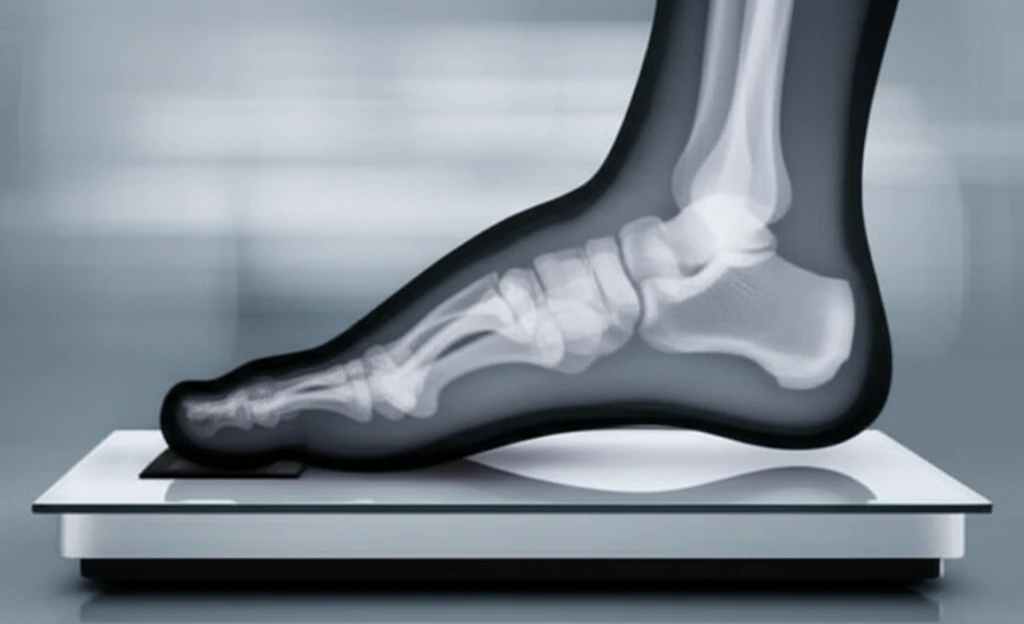
Unveiling the Truth: How Weight-Bearing Impacts Your Foot Radiographs
"New research sheds light on how different levels of weight-bearing affect foot X-rays, potentially changing how we diagnose and treat foot conditions."
Foot radiographs, or X-rays, are a cornerstone of diagnosing and managing various foot conditions. Often, clinical decisions hinge on these weight-bearing images. But have you ever wondered how the amount of weight placed on the foot during the X-ray affects the results? A recent study delves into this very question, revealing surprising insights into how different weight-bearing conditions can alter radiographic measurements.
The study, published in Foot & Ankle Specialist, sought to determine whether varying percentages of weight-bearing influence radiographic measurements of the normal foot. By examining a group of healthy individuals under five different weight-bearing conditions, researchers uncovered significant changes in specific measurements, challenging some common assumptions about foot imaging.
For anyone who's experienced foot pain, is recovering from an injury, or is simply curious about foot health, these findings could have a significant impact. Let's explore the key takeaways from this research and what they mean for understanding your foot radiographs.
Decoding Weight-Bearing: What the Study Revealed

The prospective study involved 20 healthy participants who underwent foot radiographs under five conditions: non-weight-bearing, 10% body weight, 25% body weight, 50% body weight, and 100% body weight. Researchers then meticulously measured several key radiographic parameters, including:
- Hallux valgus angle (HVA)
- 1-2 intermetatarsal angle (IMA)
- Talonavicular coverage angle (TNCA)
- Talocalcaneal angle (TCA)
- Forefoot width
- LisFranc distance
- Cuboid height to ground (CHG)
- Talo-first metatarsal angle (TMA)
- TNCA and TCA Increased: These angles, indicative of midfoot abduction and hindfoot alignment, respectively, significantly increased as weight-bearing increased.
- CHG Decreased: The cuboid height to ground, a measure of arch height, decreased with increasing weight-bearing, suggesting a flattening of the medial arch.
- No Change in HVA, IMA, Forefoot Width, LisFranc Distance, and TMA: These measurements remained relatively stable regardless of the weight-bearing condition.
The Bottom Line: What This Means for You
This research highlights the importance of considering weight-bearing conditions when interpreting foot radiographs. The study suggests that radiographic changes in the foot occur primarily between non-weight-bearing and 25% weight-bearing. Once a patient is bearing at least 25% of their body weight on their foot, the radiographs would be no different than if they were standing on one leg.
